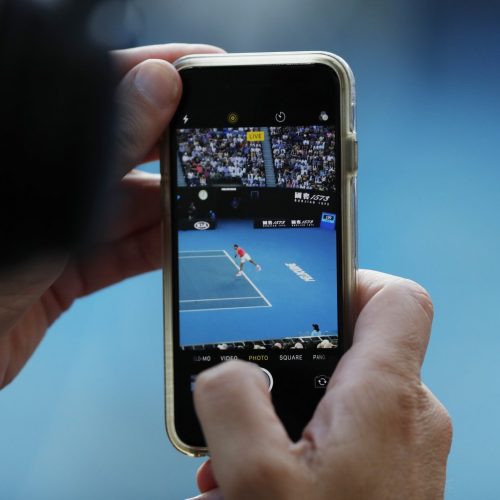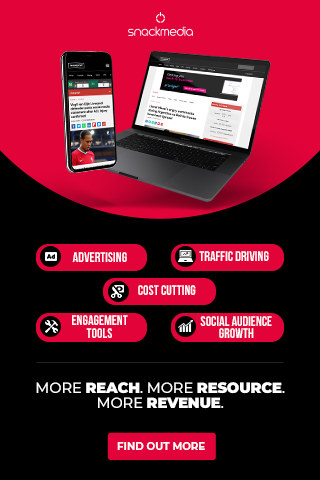The seven essentials for achieving successful sports branding
By Daniela McVicker
When it comes to sports, great branding is a must. Your brand influences how people see your company or team. It helps you to forge connections with your target audience and increases recognition. That said, building a successful sports brand is a challenge. You must have all of the right elements in place to ensure you create the desired image. These seven essentials can help you succeed.
Sports Logos Are Key
A good logo isn’t the beginning and end of a good brand, but it is extraordinarily important. This is especially true in sports. First, branding and merchandising are very tightly connected to sports. Next, think about your favorite sports franchise. Chances are, the mascot and logo are two of the first things that come to mind.
This is a very visual industry. It’s important that you create an impressive sports logo. Consider hiring a professional to design and produce your logo.
Endorsements Build Connections
There’s a proven connection between celebrity endorsements and increased purchase intent in sports marketing. It’s smart marketing to get a well-known person to endorse or become a spokesperson for your brand. Keep in mind that a celebrity endorser doesn’t need to be a nationally known sports star. They can be:
- A well-respected coach
- A player from a minor league team
- A local sports announcer
- A retired player who is affiliated with your niche
Study Your Target Market
An eSports team, local MMA gym, and the WNBA are all sports companies. In spite of this similarity, they each attract a very different audience from one another. What one audience is going to find relatable in a brand, another most certainly will not. Before you make decisions regarding the look, feel, or attitude of your brand research your target market.
Create a Personality
Your logo and other visual elements are an important part of your branding, but your audience will also remember your brand persona. That is the personality or ‘attitude’ that your brand emulates. Think of your brand as a person. Of course, that’s not hard to do in sports marketing where mascots are so prevalent. Consider the following questions about your brand personified:
- What would their hobbies and interests be?
- How would they interact with their friends and family members?
- What would they look like?
- How would they speak and write?
- What adjectives would you use to describe their personality (intense, funny, party-animal)?
Once you’ve decided on a brand personality, it’s time to present that personality to your audience. It should be a part of all of the content that you produce including blog posts, web content, social media updates, and advertising content. This can be a daunting task. Fortunately, a review of Trust My Paper shows that they have professional writers who offer branded copywriting services. By engaging the help of a professional, you can best assure that your content has a consistent branding personality.
Identify the Most Attractive Aspect of Your Brand
What is your brand’s hook? What is it that makes it ‘sexier’ or more appealing than similar companies in your niche? Is it value, a unique experience that cannot be duplicated anywhere else, or a premium product or service? Determine what it is, and make it part of your branding.
Consistency and Control are Key
Sports brands attract a lot of media and influencer attention. Whether you’re marketing for a sports team, apparel company, or league, other people are going to be talking and writing about your brand. Because of this, it’s exceptionally important that you take steps to ensure that your brand is represented consistently and accurately. There are a few things you can do towards that end. This includes:
- Leverage owned media. Use your blog, website, and social media channel to reach out to your audience with branded content that you are in full control of.
- Make it easy for bloggers and journalists to represent your brand correctly. Create a media kit, and make it readily available to anyone interested in doing a story about your brand.
- Create a good media outreach strategy so that you can get the right stories out to the public.
- Ensure a consistent look and feel when it comes to any content that reaches the public. Create a digital assets library that contains visual elements such as logos, color schemes, templates, images, etc. Then, direct marketing team members, content creators, and others to use these in order to create a memorable look and feel.
Reality Trumps Intentions
It doesn’t matter what you want your brand to be. It only matters what other people think it is. That’s why it’s very important to seek out feedback from your audience, both directly and indirectly. Use surveys and polls to solicit direct feedback from your clients, customers, and visitors.
Next, pay close attention to what people are saying about you elsewhere. Create a Google alert for your company name. Read online reviews of your brand. Find relevant community forums and social media platforms, and search for brand mentions there. Use this information to find any differences between how your brand is perceived vs. how you want to be perceived.
Final Thoughts
Character, attitude, personality, and imagery are all important parts of the sports world. These are also the essentials of a great brand. As you build and maintain your brand, consider the tips listed here. They’ll help you create a brand that resonates with your audience, and helps your company gain the influence and reach it deserves.
About author
You might also like
Mallory Group Launches White Paper on the ‘New Normal’ for Sports Rights Holders
Sport is proving to be one of the high-profile business casualties of the Covid-19 pandemic. However, its slow and structured return will be a key factor in life entering the
Live Chat: A New Social Experience in Sports
Article written by John S. Kim, CEO and co-founder of global API company SendBird Social media rose to prominence throughout the world due to its potential for connection. Social channels provided the
Snack Media’s Football Content Campaign’s Review: February
By Mike Constanti This series, in partnership with Snack Media, will look at the best football campaigns from advertising to social media on a monthly basis, as Digital Sport evaluates how








